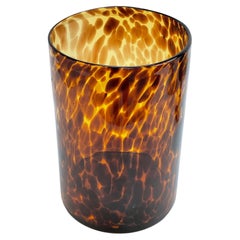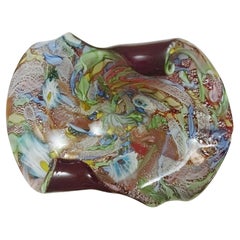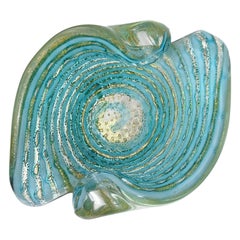Glass Ashtrays
Mid-20th Century Italian Mid-Century Modern Glass Ashtrays
Glass, Art Glass
1940s Italian Art Deco Vintage Glass Ashtrays
Murano Glass
1970s Italian Modern Vintage Glass Ashtrays
Art Glass
20th Century Italian Mid-Century Modern Glass Ashtrays
Murano Glass
1930s Italian Art Deco Vintage Glass Ashtrays
Murano Glass
Mid-20th Century Italian Mid-Century Modern Glass Ashtrays
Gold Leaf
Mid-20th Century Italian Modern Glass Ashtrays
Art Glass
Late 20th Century Italian Mid-Century Modern Glass Ashtrays
Murano Glass
1960s Italian Mid-Century Modern Vintage Glass Ashtrays
Murano Glass
1970s Italian Mid-Century Modern Vintage Glass Ashtrays
Murano Glass
1960s Italian Mid-Century Modern Vintage Glass Ashtrays
Crystal
1960s Italian Mid-Century Modern Vintage Glass Ashtrays
Murano Glass
1930s Italian Art Deco Vintage Glass Ashtrays
Gold
Mid-20th Century Danish Scandinavian Modern Glass Ashtrays
Art Glass
Late 20th Century Italian Mid-Century Modern Glass Ashtrays
Murano Glass
1940s Italian Art Deco Vintage Glass Ashtrays
Gold
Late 20th Century Italian Post-Modern Glass Ashtrays
Art Glass, Blown Glass, Murano Glass
Mid-20th Century Italian Mid-Century Modern Glass Ashtrays
Art Glass, Blown Glass, Murano Glass
1960s European Mid-Century Modern Vintage Glass Ashtrays
Murano Glass
Late 20th Century Italian Mid-Century Modern Glass Ashtrays
Murano Glass
1940s Italian Art Deco Vintage Glass Ashtrays
Gold
1970s Belgian Mid-Century Modern Vintage Glass Ashtrays
Metal
Late 20th Century Italian Mid-Century Modern Glass Ashtrays
Murano Glass
Late 20th Century Italian Mid-Century Modern Glass Ashtrays
Murano Glass
Mid-20th Century Italian Mid-Century Modern Glass Ashtrays
Murano Glass, Glass, Sommerso, Art Glass
Mid-20th Century Italian Art Deco Glass Ashtrays
Gold Leaf
1970s Italian Mid-Century Modern Vintage Glass Ashtrays
Glass
1950s French Mid-Century Modern Vintage Glass Ashtrays
Blown Glass
1930s Italian Art Deco Vintage Glass Ashtrays
Silver, Gold
Mid-20th Century Italian Mid-Century Modern Glass Ashtrays
Art Glass, Sommerso, Murano Glass, Blown Glass
Late 20th Century Italian Mid-Century Modern Glass Ashtrays
Murano Glass
1960s Italian Mid-Century Modern Vintage Glass Ashtrays
Murano Glass
1930s Italian Art Deco Vintage Glass Ashtrays
Murano Glass
Late 20th Century French Mid-Century Modern Glass Ashtrays
Glass
Late 20th Century Italian Mid-Century Modern Glass Ashtrays
Murano Glass
1950s Italian Space Age Vintage Glass Ashtrays
Murano Glass
Mid-20th Century Italian Mid-Century Modern Glass Ashtrays
Art Glass, Glass, Uranium Glass, Sommerso, Murano Glass, Blown Glass
Late 20th Century Italian Mid-Century Modern Glass Ashtrays
Murano Glass
Mid-20th Century Swedish Scandinavian Modern Glass Ashtrays
Crystal
Early 20th Century American Art Deco Glass Ashtrays
Silver
Mid-20th Century Italian Mid-Century Modern Glass Ashtrays
Silver Leaf
20th Century Italian Mid-Century Modern Glass Ashtrays
Murano Glass
1930s Italian Art Deco Vintage Glass Ashtrays
Murano Glass
Late 20th Century Italian Mid-Century Modern Glass Ashtrays
Murano Glass
1930s Italian Art Deco Vintage Glass Ashtrays
Murano Glass
1960s Italian Modern Vintage Glass Ashtrays
Blown Glass
Late 20th Century Italian Mid-Century Modern Glass Ashtrays
Murano Glass
1940s Italian Art Deco Vintage Glass Ashtrays
Murano Glass
1950s Italian Mid-Century Modern Vintage Glass Ashtrays
Brass
1930s Italian Art Deco Vintage Glass Ashtrays
Murano Glass
Late 20th Century Italian Mid-Century Modern Glass Ashtrays
Murano Glass
1930s Italian Art Deco Vintage Glass Ashtrays
Murano Glass
1920s Italian Art Deco Vintage Glass Ashtrays
Murano Glass
1930s Italian Art Deco Vintage Glass Ashtrays
Murano Glass
Late 20th Century Italian Mid-Century Modern Glass Ashtrays
Murano Glass
1970s Italian Mid-Century Modern Vintage Glass Ashtrays
Glass
Late 20th Century Italian Mid-Century Modern Glass Ashtrays
Murano Glass
Mid-20th Century Italian Modern Glass Ashtrays
Murano Glass



